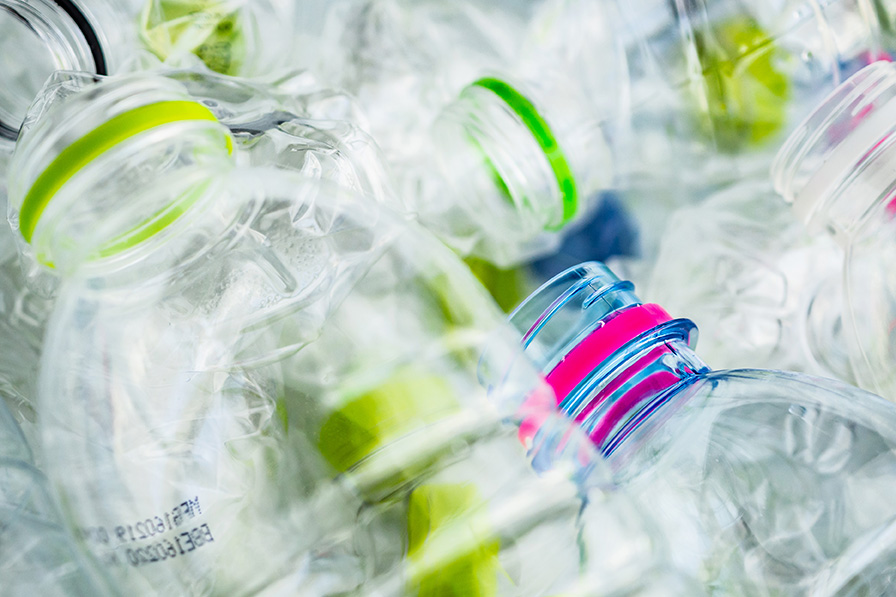
The PET Recycling Coalition will launch in the next few months and will provide grants to MRFs and other facilities to increase the capture of PET beyond bottles. | Kwangmoozaa/Shutterstock
The Recycling Partnership will launch a PET Recycling Coalition to find solutions for common recycling challenges, a representative of the nonprofit group announced at last week’s Plastics Recycling Conference.
Meanwhile, the group has developed a national recycling database and updated its drop-off site improvement kit. The following are recent news announcements from The Recycling Partnership:
Effort to fund PET recovery
Sarah Dearman, vice president of circular ventures for The Recycling Partnership, said on March 7 that the PET Recycling Coalition would launch in the next few months and will provide grants to materials recovery facilities (MRFs) and other facilities to increase the capture of PET beyond bottles.
“PET is certainly one that has a sufficient end market, has a really strong end market and has for a long time,” Dearborn said during the “Strengthening End Market Connections” session at the Plastics Recycling Conference. “It’s so strong, in fact, that people are now looking beyond the traditionally recycled bottles and saying what other types of PET packaging can we recycle and how can we get our hands on those to help fulfill all this end-market demand?”
The grants will help overcome current challenges, like how to best process PET thermoforms and opaque PET, she said.
The PET Recycling Coalition will be modeled off the group’s Polypropylene Recycling Coalition, which Dearman said has been very successful.
Comprehensive database developed
Supported by Apple, The Recycling Partnership’s National Recycling Database is meant to be a comprehensive source of information on the thousands of local recycling programs around the U.S.
The database will “empower households, manufacturers, retailers, brands, policymakers, environmental organizations and government officials to understand how individual recycling programs are conducted, what materials are recyclable at the local level and ultimately how to improve packaging recyclability,” a press release said.
“This is the first time that a systematic search of community programs has been completed and aggregated into a database that will be able to answer questions for consumers, companies, and recycling professionals,” the press release said, and the database will be continuously updated.
The Recycling Partnership is also working on a set of digital tools that pair with the database, including a chatbot tool, which will be available this spring.
“We are thrilled to share this powerful database that offers a hyperlocal and a high-level view of the U.S. recycling system at any given moment,” Aaron Burman, vice president of data and analytics, said in a press release. “We’ve built a state-of-the-art neural network to detect changes in community websites, but this is really just the data foundation for a suite of tools that will help drive circularity throughout the U.S. economy.”
Drop-off recycling guide
The re-launch of the Drop-Off Recycling Contamination Reduction Kit will help reduce contamination at sites with a six-step guide. The expanded kit includes guidance on discussions with local MRFs and haulers, instructions and tools for messaging, tips for best results, strategies to reduce contamination including illegal dumping, security strategies and staffing guidance.
“It can be used by communities looking to get started with drop-off recycling, as well as those with established programs that would like to reduce contamination, increase participation and even improve capture of clean materials,” the press release said.
A version of this story appeared in Resource Recycling on March 15.
More stories about PET
- Candy giant Mars reached 7% PCR use in 2024
- PET Recycling Coalition doubles down on thermoforms
- Bottle cap design: No need to ‘reinvent the wheel’